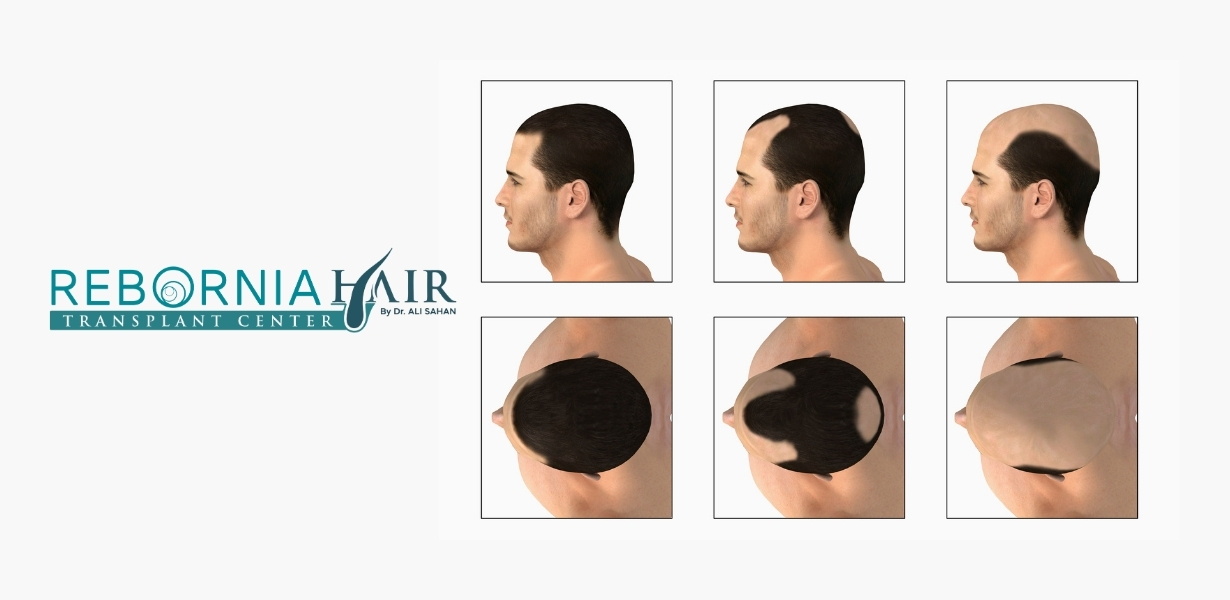

Male pattern baldness is one of the most common types of hair loss, affecting a large portion of men as they age. Understanding its causes, symptoms, and available treatments can empower you to make informed choices. Let’s explore everything you need to know about male pattern baldness and effective ways to combat it.

A hair graft is a small piece of tissue containing hair follicles, which is transplanted from a donor area to areas experiencing hair loss. It’s the cornerstone of most hair restoration procedures, especially hair transplant, where grafts are strategically placed to recreate a natural-looking hairline or add density to thinning areas.
Male pattern baldness, also known as androgenic alopecia, is a genetic condition that leads to hair loss in a specific pattern. Typically, it starts with a receding hairline, followed by thinning on the crown, and, over time, it can result in baldness. Although it predominantly affects men, women can experience a similar pattern of hair loss, albeit usually less pronounced.
Male pattern baldness progresses through defined stages, often classified using the Norwood Scale, which categorizes hair loss patterns:
Stage 1: Minimal or no hairline recession.
Stage 2: Slight recession at the hairline, especially at the temples.
Stage 3: Deeper recession at the temples, forming an M-shaped hairline.
Stage 4: Significant thinning or bald spot on the crown.
Stage 5: The bald areas on the crown and front hairline expand and may join.
Stage 6-7: Advanced hair loss, with only a rim of hair remaining around the back and sides.
Male pattern baldness generally presents the following symptoms:
Gradual Hair Thinning: Hair becomes finer and may lose color in certain areas.
Receding Hairline: The hairline moves backward, particularly at the temples.
Thinning at the Crown: A noticeable bald spot often develops on the crown of the head.
Overall Hair Loss: In advanced stages, most hair on the top of the head may disappear.
These symptoms can vary in severity depending on individual factors like genetics and age.
Male pattern baldness is primarily caused by genetics and hormonal changes. The key culprits include:
Genetics: A family history of baldness, especially on the mother’s side, increases the risk.
Hormonal Influence: Dihydrotestosterone (DHT), a hormone derived from testosterone, affects hair follicles, causing them to shrink over time.
Age: Hair loss becomes more common with age due to prolonged exposure to DHT and a natural slowing of hair growth.
Other factors, such as stress, diet, and lifestyle, may contribute to hair thinning, but they don’t directly cause male pattern baldness.
Male pattern baldness is treatable, though the effectiveness of treatments can vary. Here are some popular methods:
Hair transplant is one of the most effective ways to address male pattern baldness. This procedure involves relocating hair grafts from a donor area (usually the back of the head) to the balding areas.
FUE (Follicular Unit Extraction): Individual hair follicles are extracted and implanted into the balding area.
DHI (Direct Hair Implantation): Similar to FUE but uses a specialized tool to implant hair directly.
Hair transplants are ideal for advanced baldness, and results are long-lasting.
Platelet-rich plasma (PRP) therapy is a non-surgical treatment that involves injecting platelet-rich plasma into the scalp to promote natural hair growth. PRP is believed to help stimulate dormant hair follicles and boost hair density, making it a good option for early to moderate hair loss.
Several FDA-approved medications are effective for male pattern baldness:
Medications can be effective for slowing down hair loss but generally require ongoing use for sustained results.
For those not ready for medical interventions, styling techniques and products can create the appearance of fuller hair. Some methods include:
Hair fibers: These are used to cover thinning areas, making hair look denser.
Volumizing shampoos and conditioners: They help thicken the appearance of individual strands.
Hairstyles: Haircuts that add volume or texture can mask bald spots effectively.
Rebornia Hair Clinic is renowned for hair transplantation in Turkey. Offering top-notch hair transplant services, including FUE and DHI, we are committed to providing personalized care for each patient. Our experienced team uses the latest technology and innovative techniques to deliver natural-looking, long-lasting results at an affordable price.
Are you ready to take the first step toward restoring your hair and confidence? Book a free consultation with Rebornia Hair Clinic today! Contact us and let us help you on your hair restoration journey.
Male pattern baldness cannot be prevented as it’s largely genetic. However, lifestyle changes, such as reducing stress and eating a balanced diet, may slow down the progression.
Diagnosis usually involves a physical exam, but in some cases, a dermatologist may perform a scalp biopsy or blood test to rule out other conditions causing hair loss.
Not necessarily. Male pattern baldness often starts at the temples or crown, and early stages may not affect the center part. However, as it progresses, hair thinning will become more noticeable.
While you can’t fully reverse male pattern baldness, treatments like hair transplants and medications can restore hair density and improve appearance.
Male pattern baldness affects approximately 50% of men over the age of 50, though it can begin as early as in one’s 20s.
Male pattern baldness is typically cosmetic and doesn’t affect physical health, though it can impact self-esteem and mental well-being.